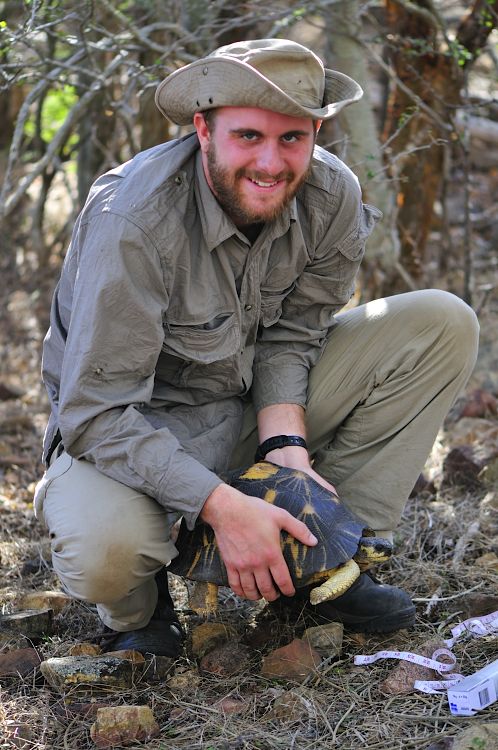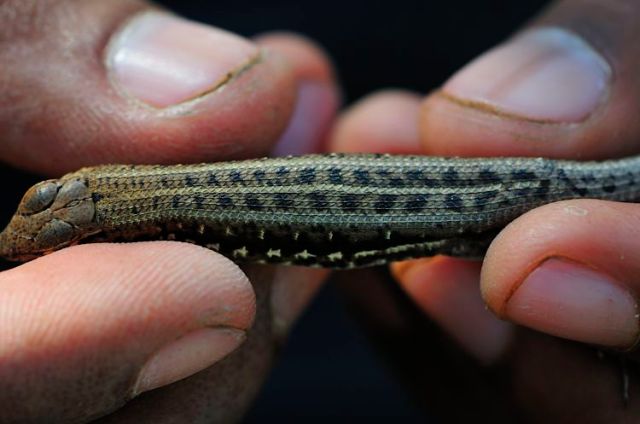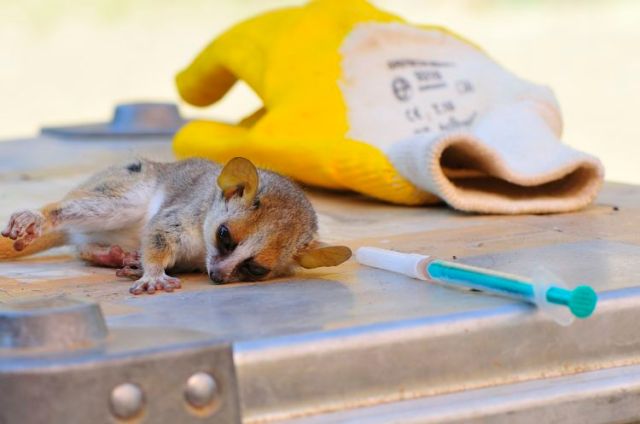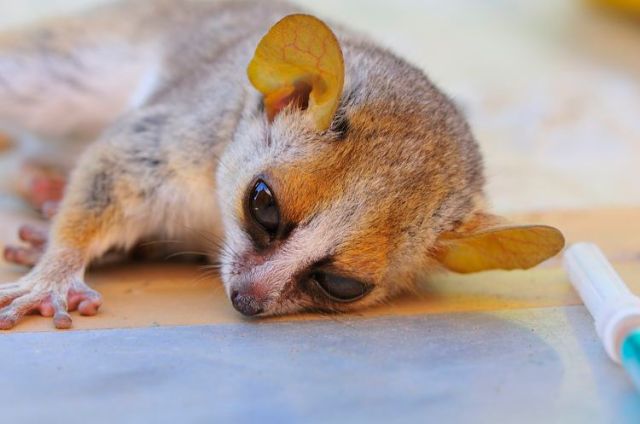It’s about time I got round to posting some science stuff on here, so that I can finally get to the fun stuff – the animals! But before I can get to that, I have to go through the part that made the trip happen, and that was the science.
I’m not going to bore you with the particulars of the science and how it worked – that I will save for the project website. I just want to let you know a little bit about what we did.
Myself and Matthew were working with three students from the Centre Ecologique Libanona, a university in Fort Dauphin, who were gathering data for their dissertations. Herman (above) was my counterpart. We were investigating the affect of disturbance on reptilian diversity and abundance within the spiny forest. Matthew (below) was working with Rivo (also below), investigating the status of the radiated tortoise, Astrochelys radiata within the same area of forest. The third student, Morulla, was working independently from us on a plant study of the area, but his data will also be put towards the analysis of my own studies, as his transects were concentrated around my traps.
Herp Work
One of the main ways I was gathering my data was through the use of pitfall traps – a line of buckets sunk into the ground with a fence inbetween them that stops things from going through, channeling them into the buckets. These are one of the most commonly used forms of passive capture, but putting them in is hard work. Especially when the ground is made mostly of rock.
Once in, the traps ran for a week each, and we based our walking patterns around them. The main mode of capture and observation however was opportunistic searching – or walking, to those unfamiliar with the scientific nomenclature. This is by far the easiest way to gather an inventory of species it turns out. Every specimen we found and caught was recorded, including measurements, scale counts, and other fun things. And then they were marked with a nontoxic paint, and released. Fun times!

Tiny scale counts are amongst the most important identifiers for different species of lizards and snakes

A fish scale gecko record photo - these geckos are able to shed all of their body scales and also their tails as a defense mechanism
Naturally you also have to sex the individuals, which in some cases is easier than in others.
One of the more awesome outcomes of my work was the discovery of what could potentially be a new species of blind snake, of the genus Typhlops (currently under investigation – it is either new, or the only living specimen ever documented of an old species resurrected in 2009). Here are the photos of that snake (and before you ask, yes, it is a snake. Yes, it does look like a worm. No, it doesn’t act like one):
So that is obviously super exciting.
Tortoises
Matthew’s research involved the finding and recording of radiated tortoises (Astrochelys radiata) in the forest. Every individual had 39 measurements taken, was photographed repeatedly, weighed, marked, and released. Then using fun statistics, we tried to match the tortoises to population subgroups according to previous studies. These tortoises are listed as Critically Endangered on the IUCN red list, as they are under threat from illegal poaching for the pet, meat, and jewellery trade.

The plastron of the male tortoise is deeply domed, so that his shell fits neatly on top of the female's

Matthew, my tortoise man, makes gouges in the lateral scutes of a tortoise so it can be recognised if it is recaptured
Fortunately, in this area of Madagascar, it is taboo to eat the tortoises. But there are no taboos against touching them; they are treated like pests by local farmers, and thrown out of fields, often inflicting crippling injuries on the individuals.

Charlie has a damaged carapace, most likely from being hurled out of someone's field - with no natural predators as adults, tortoises are killed mostly by old age and humans
Lemurs
None of my team was working with lemurs; we lacked the experience, knowledge, and time required to tack this onto our own studies. However, Matthew and I nipped across to another research station, some 18 kilometres to the east, and there met Wiebke Berg, a german woman studying mouse lemurs in the area around Mahavelo.
They trap mouse lemurs on a variety of trees. The first time each individual is captured, they tranquilise it, take measurements, take fur clippings for genetic samples, photograph, and mark it using a system of ear paints. Every subsequent recapture, the lemurs are simply recorded, and released, without any ketamine.
Yes, Matthew and I did get to hold them. And yes, they are the cutest things I have ever held in my life.
I actually held one that was not stoned some weeks later, when a man brought it into camp, but I was wearing gloves and I released it soon after.
That’s really all I have to say for this post. I apologise for its brevity, and the lack of cool pictures, but I was working hard, and not really concentrating on photography unfortunately.
Next time, eh?
Tune in again on Thursday, for more fun animal pictures!




























nice pictures!!
very very good 😀
are you working as a exploerer??
not as such; I’m a student right now, but I hope to do a lot of field work in my future research. Hopefully that means going back and forth to Madagascar a lot!
thanks 🙂
what did you study??
I study Zoology/Evolutionary biology at the University of Edinburgh.
Looks as though you had great adventure and you definetly saw a lot of wildlife. I really enjoyed your site with such spectacular photography. ~Bonnie Flach~
thanks bonnie. I sure did 🙂